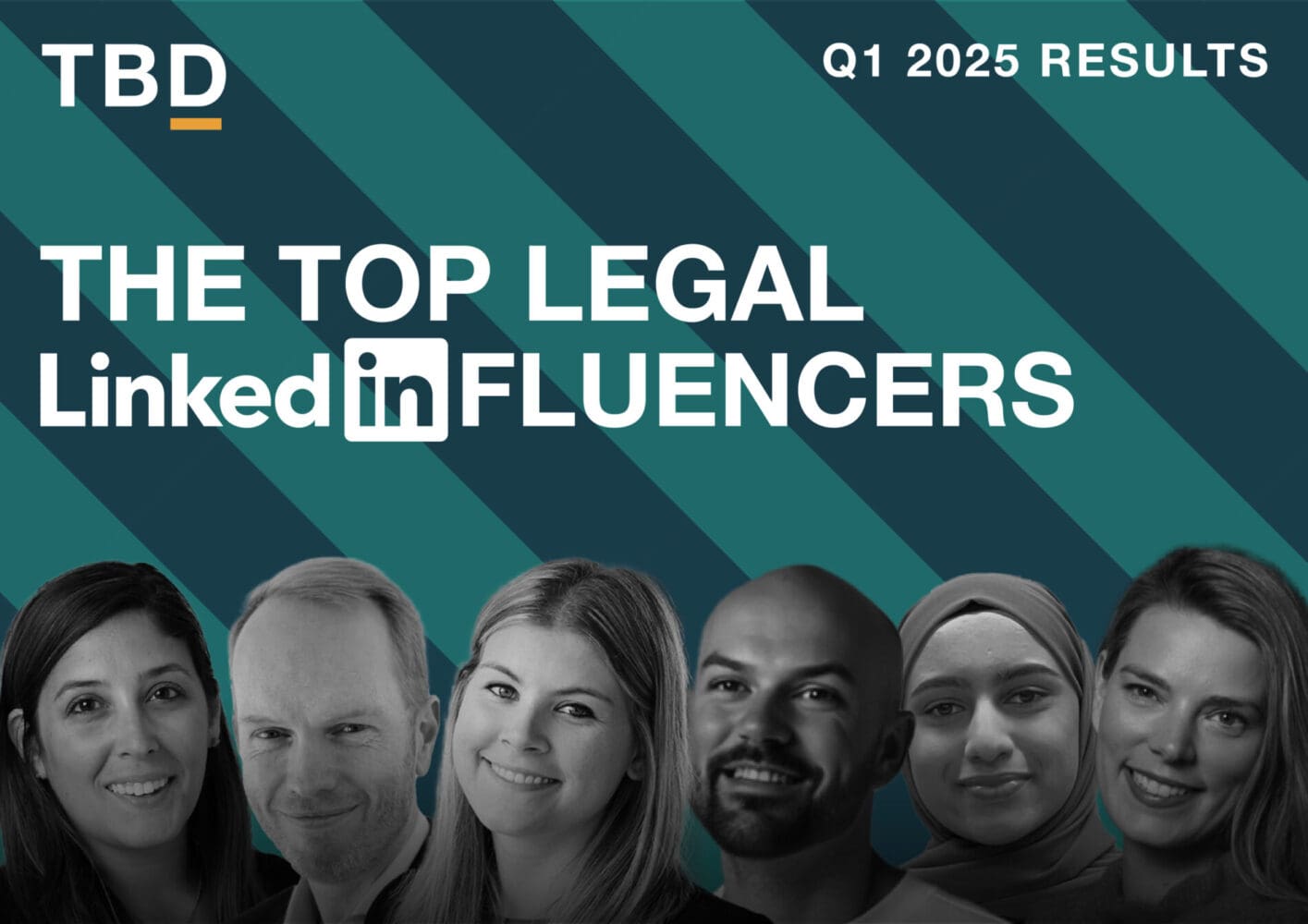Mental Health in the legal sector: by numbers
It’s no secret that the legal profession has established a reputation for itself as having a universal ‘suck it up and get on with it’ attitude. Due to the incredibly demanding and intense nature of their jobs, it is understandable that lawyers and their colleagues may feel they have no option but to just knuckle down and ignore any personal issues in favour of tackling professional ones. However, it doesn’t have to be one or the other. And that is what this edition of Si’s Matters is all about.
Various studies earlier this year revealed that an astounding 71% of lawyers worldwide have anxiety, and 83% of attorneys report they are stressed at least some of the time. Last year, 69% of respondents to a legal survey by the Law Society reported high levels of burnout, and the IBA professional wellbeing commission found that 41% of respondents to their surveywould not discuss mental wellbeing concerns with their employer for fear it may have a negative impact on their career, due to the stigma established around mental health.
I strongly recommend the IBA’s 2021 report about global mental wellbeing in the legal profession if you are interested in learning more about the statistics and figures around this. You can access it here.
Four top tips for optimising wellbeing in law
By Melanie Pritchard – Life, Career Coach and Corporate Wellbeing Trainer
The legal profession is widely known to attract some of the highest achievers out there. From A-Type personalities driving Magic Circle revenues north of a billion pounds a year, to cut-above intellect which sees only a third of student barristers securing pupillages, the legal arena is built on extremes. You simply don’t cut the mustard without crème de la crème grades, drive, attention to detail and resilience.
Ironic then, isn’t it, that these stellar qualities can also be many lawyers’ Achilles’ heel. For while the high-powered legal industry thrives off outstanding professionals, this same unrelenting standard for excellence can leave legal professionals feeling imbalanced, burnt-out and more vulnerable to mental illness than employees in other industries.
And while many aspects of law contribute to mental well-being – from financial security, intellectual stimulation, close working relationships and social status – research shows that lawyers operate at binary levels which make for “lower levels of psychological and psychosomatic health wellbeing than other professionals” (The University of Queensland).
So, why is law particularly stressful?
New York lawyer turned psychotherapist, Mr Meyerhofer says, “There is something unique about the law partnership structure, billable hours and the brutal competition of a law firm”.
Couple this with the complexity of the law, the risk of negligence and blurred technological boundaries between home and work life, and you have an ‘always on’ culture which thrives off extremes. Catastrophising about making a mistake on a case for a high-paying client? Amazing ROI for them, not so ideal for you.
So, what’s the magic quick fix? As our old friend Shakespeare would say, “Ay, there’s the rub…”
For as ex-M&A lawyer and psychotherapist Jonathan Coppin points out, “what the researchers don’t really seem to ‘get’ (and people outside the profession often don’t), is that those standards may be impossible but they are also absolutely ‘real’ in the sense that you do have to take them completely seriously if you want to be in that world”. In this sense, the intensity which drives lawyers to excel can feel inescapable.
Throw in a lack of awareness around wellbeing optimisation and you have a breeding ground for mental health stresses ranging from depression, anxiety to insomnia, problem drinking and beyond.
So here are 3 top tips to conquer common legal pain points my career and life coaching clients face:
1. The Positivity Sandwich: Under pressure because your inner people pleaser feels like you can’t say ‘No’, given the ‘always on’ expectations of a legal firm? This is a communication game-changer for having difficult conversations and boundaries without alienating colleagues. Let’s say you’re swamped with work and someone senior asks you to do something urgent. Your inner monologue screams ‘there’s no way I can do this without working past midnight’ but you find yourself saying ‘Yes’ for the nth time. This tool helps you close the gap between what you think internally and what you say out loud, leading with a positive opener and close which makes the truth land more palatably:
- Positive Opener: That work sounds really interesting and I wish I could help but…
- The Problem / Truth: I’m at capacity with urgent work for Peter right now so I won’t be able to help on this occasion (try and be authentic and assertive, externalising your inner monologue as much as possible)
- Positive Close / The Commercial Benefit: I’d love to help next time if I’m able to, so I can give your work the attention it deserves (something positive about adding value at work / meeting a shared purpose)
Remember, 65% of the impact of your communication is the non-verbal stuff – pace / tone / body language / facial expressions – and just 35% is the words. So if you speak slowly, confidently and calmly with good eye contact and a smile, if appropriate, the words should land well. This can be used at home, too, to appease stressed-out spouses and partners!
2. The Probortunity: Ever felt overwhelmed by a turn of events that floods you with stress? Looking for the opportunity in the problem is an effective way to shift the brain from a sense of passive powerlessness to empowerment and control, shifting you from victim mindset to growth mindset where life is happening for you, not to you.
Here’s an example:
Problem:
You’re dreading having a stressful conversation with a colleague about a poor piece of work they did
Opportunity in the Problem:
This is an opportunity to develop my leadership skills and help them improve their attention to detail
3. The 5 Step Cognitive Behavioural Therapy Game-Changer: CBT is an effective treatment for mild to moderate depression and anxiety and a great life toolkit for rebalancing stressful thoughts. Have you ever noticed your mind being overwhelmed with cognitive distortions like catastrophising (you’re likely to get the sack) / black and white thinking (your presentation was all good or bad) / generalising (you didn’t get the new job so there are none out there) / negative mental filter (one tiny mistake and your work is awful) / labelling yourself (you call yourself an idiot). Left unchecked, these can hijack our thoughts and impact our feelings and behaviours, causing stress and distress which is rarely commensurate with reality. Identifying these distortions as they arise can prevent these unhelpful thoughts embedding themselves in feelings and behaviour and help us reframe them in more helpful ways. Dr Martin Seligman calls this a vital ‘cognitive intervention’. Here are the five simple steps:
i. What’s a stressful thought + feeling going through your mind?
e.g. she criticised me, she thinks I’m stupid.. she’ll sack me
ii. Which cognitive distortion(s) am I noticing?
e.g. labelling ourselves / mind-reading / negative mental filter / catastrophising / black and white thinking / fortune telling / minimising (see full summary of cognitive distortions here)
iii. What hard evidence do I have that this distortion is true? (Must be court of law substantive)
e.g. hmmm, actually maybe not much – she’s praised my work before
iv. What’s an alternative way of looking at this?
e.g. maybe she was talking about one thing in particular and trying to help me improve / maybe it came out wrong and she’s having a bad day / maybe there’s an opportunity for growth here – what is it?
v. What would I say to a best friend in this situation?
e.g. maybe she didn’t mean it like that and was trying to help / maybe she has a more direct communication style / maybe you could ask her for more info to clarify what she meant? Why do you think she’d think your work is bad at large when you’ve told me many times you do a great job?
Now think of a recent example of a stressful thought and apply the above. What’s different? What’s the positive learning? Disclaimer: the brain is neuroplastic – the more you practise, the better the results – and the best news of all… the subconscious believes anything you feed it if you do it enough, even if you don’t initially! If that doesn’t help, career coaching may help you get clear on a better fit career-wise or a therapist can help you unpick what’s really going on.
4. The Burnout-Buster: The Body Check-In: As the Stress Curve below shows, there’s a fine line between peak performance (yellow) and exhaustion and burnout (orange and red). The latter can be almost indecipherable when you’re in an A-Type ‘Go, go, go’ environment where you feel like you have little time to pause or rest. However, as Olympic athletes teach us, rest and recovery is a high-performance habit which supports peak performance over a longer period versus crashing and burning. The trick is checking in with your body before you say ‘Yes’ to putting that extra meeting or lunch in your diary on an already busy day or agreeing to another case when you’re at capacity. Instead, ask yourself how are you feeling? What is your intuition saying? If your body could speak, what would it say? Another trick to building in pockets for pause and rest is a bridging response to a request, where you say you’ll revert shortly. This is a mini mindfulness trick which buys you time to check-in with how you’re really feeling before you agree to something you may later regret. In the words of Viktor Frankl, “between stimulus and response there is a space. In that space is our power to choose our response. In our response lies our growth and our freedom”.
Melanie Pritchard is a lawyer turned Life, Career Coach and Corporate Wellbeing Trainer, helping smart, successful clients move from where they are to where they want to be.
Lessons from the trenches
I think the world becomes a better place when we don’t hide behind an impervious facade of perfection, but instead allow ourselves to be authentic and vulnerable. Otherwise, we close ourselves off to connection and end up trying to navigate this weird thing called life in not-so-splendid isolation. So in that spirit: did I ever tell about that time I had a nervous breakdown?
It happened in my last salaried role before I went off and founded TBD. I won’t bore you with all the details, but suffice to say that my mental health was the price my employer seemed happy for me to pay when they put me in the impossible position of advising them on a project they had absolutely no intention of ever implementing. It was a recipe for off-the-scale cognitive dissonance and an insurmountable level of stress that shattered me.
Although I felt completely unheard and unsupported by the powers-that-be at this firm, I was at least lucky enough to have a very sympathetic manager, in whose office I ended up breaking down in tears on the day that I hit my nadir – he was instrumental in initiating a process that led to me taking seven weeks off on health grounds, a much-needed intervention that saved me from incurring even further harm.
However, upon my return, the situation remained as it had been before – that is to say, completely unacceptable – and I knew that I had to leave for the sake of my physical and emotional wellbeing.
It’s fair to say that I’ve been on a bit of a journey since then. Yes, I have always been prone to driving myself hard – to engage in some good old-fashioned British understatement, you don’t become the owner of a successful law-firm marketing agency without a spot of hard graft along the way. But as I’ve got older, I have also learned that there is a price to be paid. These days, I think I am a lot wiser to the ways that we highly ambitious professionals can end up working to the detriment of our own mental wellbeing. I’d like to share some of these hard-won insights with you here.
1. First and foremost, don’t sacrifice your mental health for your career. It’s easy to succumb to tunnel vision in the pursuit of professional success, but it’s vital to come away from the coalface at regular intervals and look at the bigger picture.
Burnout is rife in the professional services sector not least because people are so busy charging headlong at the various obstacles in their way that they don’t take stock of their situation from a holistic perspective. Am I professionally fulfilled? Is the price I am paying to be on this path worth it? How’s my sleep? When did I last take the weekend off?
2. As a follow-on from point 1, don’t be an amber gambler. What do I mean? Well, you want to spend the vast majority of your time working in the green zone – yes, work is challenging, but in a good way: you’re being pushed, but it’s enjoyable if not always comfortable. That’s where growth and learning and development happen.
The amber zone is one you want to avoid. That’s where you find yourself doing all-nighters, working through the weekend, and generally giving more of yourself than is healthy or sustainable. Sure, the odd long evening or Saturday is par for the course in a busy and successful career – but you need to be aware that this creates a deficit which will need to be paid for. You cannot draw water from an empty well. This is the road to perdition, or at least to exhaustion and depression and burnout: the red zone.
3. Lastly, here’s a lesson I learned the hardest way possible: if you feel like a fish out of water, there are other ponds to swim in. We can often fall victim to the sunk-cost fallacy, staying with an employer long past the point that is healthy for us because we have invested so much time and physical and emotional energy into trying to forge our career there. But believe me when I say that you should never linger in a place or a role where you’ll always be a square peg forever failing to distort yourself sufficiently to fit into a round hole.
Instead, move on and find an employer whose culture and values align with your own, where your personality and approach are appreciated and embraced, and where your talents are recognised and nurtured. Or found your own business, like I did. It beats a breakdown any day.
Adversity is a great teacher. My own experience of mental ill-health has taught me to be kinder to myself and those around me, to look out for the early warning signs, and to not hold it all inside, but to reach out to the people in my life who have got my back and want the best for me. It has also forged me into a stronger person. If you are reading this and are suffering, please don’t do so in silence. And know that your mental health is always too high a price to pay for your career.
#ITSOKAYTOTALK
A profile of Andy’s Man Club by TBD copywriter David Mossop
What would life be without serendipity? It is only through happenstance that in the summer of 2021, a man named Tim ended up running the then-newly-founded Bristol branch of a men’s suicide prevention charity called Andys Man Club (AMC), which organises men’s talking groups throughout England, Scotland and Wales.
It’s only by chance that Tim’s daughter attended the same school as the daughter of a chap called Simon Marshall, and that the friendship between the two girls led to their dads also becoming mates, and to Tim persuading Si to come along to one of the AMC meetings.
And it is only by coincidence that this is where our own paths (Si’s and mine) crossed back in November 2021, when I first walked through the doors at AMC. I wasn’t quite at rock bottom that evening, but I was beginning to brush up against something dangerously close to it and knew that I needed help. I received it at AMC: a safe and non-judgmental environment to talk about the things that were affecting me, including profound loneliness and undigested grief for my dad, who died of cancer when I was a teenager. I felt seen and heard and accepted, and my life has been transformed for the better ever since.
Si and I both went from being users of the group to giving back as volunteer facilitators. At one of our facilitator get-togethers, Tim made an off-hand comment that I should be careful or Si might end up offering me a job. My ears immediately perked up – and the rest is history, as they say.
As a business owner and dad of two, Si’s schedule is far more hectic than my own, so he has had to give up his facilitator role at AMC – which is a shame, because he was bloody good at it! I have since become the lead facilitator at the Bristol North club (we now have two clubs, with the second one located in the south of the city), managing a team of brilliant, dedicated volunteers who, like myself and Si, all started out as users of the service.
Every Monday night (excluding bank holidays) between 7 pm and 9 pm, we open the doors and give a warm welcome to men who are going through a storm. We offer them a brew and a biscuit, and then sit in groups and answer a series of questions: how was your week? Can you name a positive from your week? And the big one: do you have anything to get off your chest? After another short brew break, we continue with two lighter questions that change every week, ending each session on a generally positive note.
Andy’s Man Club was founded in 2016 in the small Yorkshire town of Halifax by Luke Ambler, a former professional rugby player, after his brother-in-law Andy Roberts took his own life. Luke and Andy’s mum Elaine were determined to help prevent other families from having to suffer the same pain – suicide is the biggest killer of men under the age of 50 – and so they set up a local talking group and named it after Andy.
Fast-forward seven years, and Andy’s Man Club has grown to encompass over 150 free peer-support groups nationwide (including two in London), which are used by nearly 4,000 men each week. Men walk through our door on a Monday night with the weight of the world sitting visibly on their shoulders – but as the evening progresses and they get the opportunity to unburden themselves, you can see their posture change as the load is lightened. It’s a powerful thing to witness, and I am incredibly proud to be a part of this important movement.
So if you’re a man over the age of 18 with weight on your shoulders, give AMC a try. You don’t have to pre-register, you don’t need to be referred – simply turn up on the night and be heard by a group of men from all walks of life who understand what you are going through, because they have been there themselves.
You can find your nearest club by visiting www.andysmanclub.co.uk. If there isn’t a club near you, you can always join one of the online groups – just write to info@andysmanclub.co.uk to sign up.
And remember: the first rule of Andy’s Man Club is IT’S OKAY TO TALK.
In other news
Legal sector under ransomware siege
Law firms make perfect bullseyes for cyber attackers, as they possess both substantial amounts of money and heavily sensitive data. Data protection website Black Fog has revealed that the number of ransomware attacks skyrocketed by around 49% in 2022, and no firm, regardless of size or revenue, is safe. Most recently, multiple conveyancing firms have fallen victim to attacks on their IT systems.
Investigations by the SRAhave prompted the regulatory body to advise law firm leaders to focus on three main factors for maximising effective protection against ransomware attacks: culture, systems, and training. This may seem straightforward due to increasingly sophisticated IT system developments, although it’s often very rare that firms budget the level of finance needed to run scenario-planning exercises to prepare them for large-scale ransomware attacks.
The real heroes at the helm will be digital marketers – in light of these attacks, the pressure is on. They face an escalating workload as the number of cyber threats rises, and reviewing systems to safeguard the integrity of sensitive legal data and fortify digital defences has become more integral than ever before.
Read more about the ransomware attacks here.
Axiom Ince: maybe there is such a thing as bad press
Good news for solicitors this week, as the SRA has decided against imposing a one-off levy on solicitors to compensate for Axiom Ince’s multi-million pound loss of client money. However, if you’re a solicitor – you’re not out of the woods just yet, as the SRA has emphasised the possibility of increasing contributions next year, clarifying that there will be no cap on compensation claims from clients of the collapsed firm.
The firm was shut down by the SRA last month, and since then client claims have mounted to astonishing levels of around £33m, with only an £18m compensation fund at the authority’s disposal.
Read the SRA’s comments here.
Legal luminaries: the A-listers
Law.com international has revealed its 2023 ‘A-list’ of the top 20 law firms to work for in the UK, and there are some impressive names in there. Interestingly, only two Magic Circle firms make it into the first ten, with Freshfield and Allen & Overy taking fourth and seventh place respectively. Clifford Chance sits in 11th place, Linklaters in 17th, and Slaughter and May doesn’t even get a look-in. It’s therefore an exciting time for smaller or less high-profile firms, which are being recognised and commended for their efforts.
The criteria included revenue per lawyer, pro bono commitment, racial diversity and gender diversity. Law firm leaders – how can you up your game in these categories to be considered for next year’s exclusive list? If you’re already mastering these categories, it could only be a matter of time before that A-game turns to A-list success!
See the full list here.







